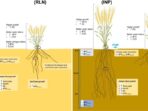The Role of Climate in Crop Selection is like the opening act of a concert—setting the stage for an agricultural symphony that harmonizes crops with Mother Nature’s whims. Imagine trying to grow pineapples in Antarctica; it’s as likely as a cat winning a dog show! Climate plays the role of a diva in this drama, passionately declaring what can and cannot thrive in various regions.
From moisture levels to temperature swings, understanding these climatic cues can make or break a farmer’s harvest.
As we delve deeper, we’ll explore the quirky characters in this tale: drought-resistant crops, frost-sensitive fruits, and everything in between. Each crop has its preferences, much like humans choosing a sofa based on comfort and color. Whether it’s the balmy breezes of the tropics or the crisp chill of northern climates, let’s unearth how these conditions influence crop choices and the art of farming.
Ah, procrastination! The art of putting things off until the last possible moment, a skill that many of us have perfected over the years. Whether it’s an overdue assignment, a neglected chore, or a looming deadline, there’s something about time slipping through our fingers that transforms us into the best versions of ourselves—albeit in a panic-fueled, caffeine-infused frenzy. In this article, we will explore the depths of procrastination with the kind of humor and insight that only a true procrastinator can appreciate.
1. The Procrastinator’s Mindset
A Deep Dive into Denial
To truly understand procrastination, one must first embrace the mindset that accompanies it. The procrastinator’s brain is a unique ecosystem where the urgent and the important coexist in a state of perpetual confusion. Imagine a wildlife documentary narrated by David Attenborough: “Here we see the typical procrastinator, lounging on the couch, blissfully unaware of the impending deadlines lurking in the shadows.”
This mindset often leads to an elaborate rationalization process. “I work better under pressure,” we tell ourselves as we scroll through cat videos or engage in heated debates about whether pineapple belongs on pizza. Spoiler alert: it does! But that’s a debate for another day, preferably after I’ve submitted my overdue paper.
2. The Procrastination Hierarchy
From Mild Delay to Epic Slacker
Procrastination isn’t a one-size-fits-all endeavor; it’s a spectrum. At one end, you have the casual procrastinator who might delay a task by an hour or two. On the other end, we have the epic slacker, who has developed a sixth sense for avoiding responsibility altogether. Let’s break down the various levels of procrastination:
- The Light Dabbler: This is the novice of procrastination. They might spend a few minutes scrolling social media before getting back to work. A mere appetizer in the buffet of delay!
- The Weekend Warrior: This procrastinator thrives on the thrill of completing tasks at the last minute, usually fueled by a mixture of panic and caffeine.
- The Last-Minute Legend: This is the stuff of legends. The Last-Minute Legend can finish an entire 10-page report in one night, emerging victorious yet slightly unhinged. They might even claim to be the “king/queen of productivity.”
- The Professional Procrastinator: This expert has turned procrastination into an art form. They have a Ph.D. in Delayism and can write a thesis on why nothing is more important than watching one more episode of their favorite show.
3. Tools of the Trade
Essential Procrastination Supplies
If you’re looking to enhance your procrastination skills, it’s essential to assemble your toolkit. Here are some must-have supplies:

- A Cozy Blanket: Perfect for snuggling up and getting distracted by Netflix.
- Coffee or Tea: Not just for staying awake, but also for creating the illusion of productivity.
- A Smart Device: The modern procrastinator’s best friend. You can check your emails, scroll through social media, or, you know, do actual work (if you must).
- Snacks: Because what’s better than munching on a bag of chips while contemplating your life choices?
- A List of Excuses: Always have some excuses handy. “I can’t possibly work on that now! I’m in the middle of a crucial TikTok trend!”
4. The Science of Procrastination
Why We Do It
Procrastination isn’t just a quirky personality trait; it has scientific backing. Studies show that procrastination is often rooted in our brains’ reward systems. When we avoid a task, the immediate gratification of leisure activates our dopamine receptors, making us feel good in the short term. But, as any procrastinator will tell you, this fleeting joy quickly turns into a whirlwind of stress and anxiety as deadlines approach.
Additionally, perfectionism plays a significant role. A procrastinator may delay a task because they’re paralyzed by the fear of producing anything less than perfect. In the words of the great philosopher (or was it a meme?), “Why do today what you can put off until tomorrow?”
5. Procrastination vs. Time Management
The Epic Showdown
Time management and procrastination are like frenemies who can’t quite decide if they love or hate each other. On one hand, time management advocates would have you believe that sticking to a schedule is the secret to success. On the other hand, procrastinators know that the thrill of the last-minute rush is where the real magic happens.
It’s a classic case of “to each their own.”
However, let’s be real: while time management may feel like a trap devised by well-meaning adults, procrastination is practically an Olympic sport. Why settle for mundane schedules when you can have an adrenaline-fueled race to the finish line?
6. The Procrastinator’s Playbook
Strategies for Success
There’s a fine art to procrastination that can be harnessed for productivity. Here are some cunning strategies to navigate the choppy waters of delay:
- The Pomodoro Technique: Work for 25 minutes, then take a 5-minute break. It’s the perfect strategy for procrastinators who can’t resist the siren song of social media—just limit those scroll sessions!
- Set Ridiculously Low Goals: If you aim low, you’ll probably achieve your goals without breaking a sweat. “I only need to write one paragraph today” sounds way more achievable than “I need to write an entire essay.”
- Reward Yourself: Celebrate small victories with treats—be it a cupcake, a cat video, or a quick gaming session. Bribery works wonders!
- Prioritize Tasks: Become a master of the to-do list. Write down every possible task and then ignore it while you binge-watch your favorite series. Prioritizing procrastination is still a form of prioritization!
7. When Procrastination Bites Back
Tales of Woe
While procrastination can sometimes lead to miraculous moments of creativity, it also has a dark side. Here are some tales of woe from the trenches of last-minute living:
- The Midnight Realization: It’s 2 AM, and you suddenly remember that report due at 8 AM. Cue the panic! The adrenaline-fueled sprint to finish it transforms into a caffeine-induced state of delirium. You might even invent new words—it’s linguistics at its finest!
- The Mistaken Submission: You submit your paper and then realize you accidentally attached a picture of your cat instead of the final draft. Congratulations! You’ve just earned a solid 0/100!
- The Unfinished Business: You start five different projects but finish none, leading to a chaotic workspace filled with half-finished ideas and abandoned dreams. Welcome to the Procrastinator’s Hall of Fame!
8. The Bright Side of Procrastination
When Delay Becomes Delight
Amidst all the chaos and stress, there is a silver lining to procrastination. Sometimes, putting things off can lead to inspiration striking like a lightning bolt! You might have a eureka moment while desperately trying to finish that project or find a creative solution that you would have never thought of in a calm, organized state.
Who knew that a last-minute panic could ignite the creative genius within?
Moreover, procrastination can help you prioritize what really matters. Not every task is worth your time and energy. In the grand scheme of life, does it really matter if your socks don’t match? Spoiler alert: it doesn’t!
Conclusion: Embracing Your Inner Procrastinator: The Role Of Climate In Crop Selection
In conclusion, procrastination is both a blessing and a curse. It has its pitfalls, but it also offers a unique perspective on time, creativity, and the human experience. So the next time you find yourself staring at a blinking cursor, remember: you’re not alone! Embrace your inner procrastinator and take pride in your unique ability to turn chaos into art.
Just remember to hit “submit” before the deadline—or at least before you get a notification that the deadline has passed!
Happy procrastinating!
Key Questions Answered
How does climate affect crop yield?
Climate affects temperature and precipitation, which directly impact growth rates, harvest times, and overall yield, making some crops flourish while others wilt.
Are there crops that can grow in extreme climates?
Absolutely! Crops like quinoa and certain types of barley are champions of the extremes, thriving in both arid deserts and frigid conditions.
What role does soil play in crop selection alongside climate?
Soil is the unsung hero; while climate sets the stage, soil provides the nutrients and structure crops need, making it essential for growth alongside climatic conditions.
How can farmers adapt to climate change?
Farmers can embrace techniques like crop rotation, drought-resistant varieties, and innovative irrigation practices to adjust to shifting climate patterns.
What resources are available for understanding climate impacts on agriculture?
Farmers can tap into local agricultural extension services, online climate data platforms, and research institutions for insights tailored to their specific regions.





